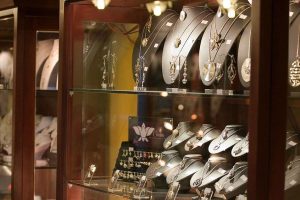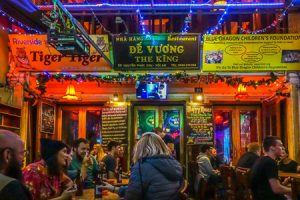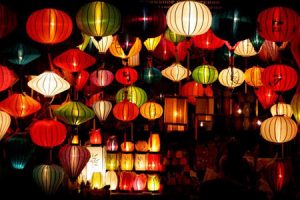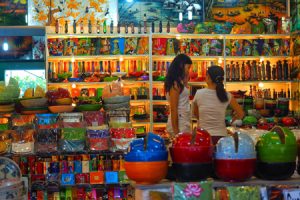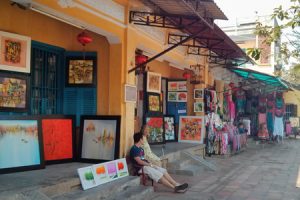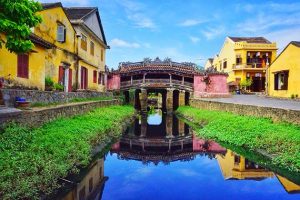Hoi An Highlights
Hoi An Old Town is a small city in the northeast of Tam Ky, Quang Ngai Province. This region covers a total area of about 6027.25ha and houses over 80,000 inhabitants. Hoi An used to be an important trading port of Nguyen Dynasty in the 18th century to exchange goods from China, Spain, Japan, Portugal, and Holland. Nowadays, Hoi An does not function as a trading port but primarily is a top Vietnam attraction. Anyone who comes to Vietnam is advised to pay at least once time to visit this old and beautiful town during their Vietnam vacation.
Hoi An location and geography
Hoi An district and the old town is located on the downstream of Thu Bon River. It is one of the coastal plains of Quang Nam Province, just approximately 28km to the Southeast of Da Nang. Hoi An has borders with Dien Ban District in the Northwest, Duy Xuyen District in the North and the South China Sea in the East.
Hoi An is the confluence of Quang Nam’s big rivers: Thu Bon, Truong Giang, and Co Co. Most of the land area is connected with streams, rivers, sand dunes, pond, lakes and nipa palm forests. 18km away from Hoi An is Cu Lao Cham island where includes dozens of islands that are different in sizes and shapes. The islands form into a bow-like shape to protect the mainland.
A brief history of Hoi An
Between the second and the fourteenth century, Hoi An, which was originally called Lam Ap Pho, belonged to Champa and was a busy port for Chinese, Arabian and Persian businessmen. This town played an important role in the prosperity of Tra Kieu and My Son of Cham Cities. However, due to some historical factors, this land was ignored until the 16th century. During four centuries from the 16th to the 19th, Chinese as well as Dutch, Indians, Japanese and Portuguese settled in Hoi An to do trade. Hoi An in Vietnamese means “a peaceful meeting place”. When the British and European came here, they called Hoi An “Faifo”.
In the 18th century, Hoi An was considered as the best destination for trading all over Southeast Asia. The major products were silk, ceramics, wood, and metals. It is believed that the heart of the dragon lay under the ground of the city, making the business flourished.
Weather in Hoi An
Hoi An possesses a pleasant climate due to the favorably natural and geographical factors. The weather remains calm mild between May and late August when the winds from the south mildly blow to the mainland. The rest time of the year is intermittent between rainy and sunny, hot and cold.
Hoi An Heritage and Hoi An Attractions
As a well-conserved model of Southeast Asia trading port from the 15th to 19th century with unique constructions blending local and international cultures, in 1999, Hoi An Ancient Town was declared a UNESCO World Heritage Site.
In this ancient town, there are a number of tourist attractions where you can have some insights into the history and culture of the regions.
– Japanese bridge (Chua Cau): Connecting Nguyen Thi Minh Khai street and Tran Phu street, Chua Cau is a 20m-bridge constructed by the Japanese. The bridge dates back to the 16th century when foreign trade was at its glory days; so the Japanese trading community built it to connect with the Chinese area on the other side of a river.
– Old House of Tan Ky: This house is a stereotype of the 18th merchant’s inhabitants in the commercial port. Tan Ky in English means “the Progress Shop”, which demonstrated the wish for being prosperous. The house was also a living space of two generations of a business family. Nowadays, it is located at 101 Nguyen Thai Hoc Street of Hoi An Ancient House.
– Hoi An Traditional Art Performance Theatre: the theater performs Vietnamese folk music and dance. Although the place was not spacious, it gives the audience a sense of coziness and comfortable feelings with the sound of music and facial expressions of the artists. The theatre could be found at 75 Nguyen Thai Hoc Street.
– Kim Bong Carpentry Village: Originally, the village was located in the north of Vietnam. Since the 16th century, the craftsmen moved to the Central regions such as Hue and Hoi An to make buildings, furniture, royal tombs or architectural projects. Most of the works are the combination of Japanese, Chinese and Cham culture. Today, there are lots of things to do for tourists such as watching skillful artisans working with the crafts, seeing some historical relics or making their own products.
– Tra Que Herb Village: Just about 4km to the north of Hoi An Ancient Town, Tra Que is a small village between De Vong River and Tra Que alga pond. Due to the favorable nature and climate, the village could plant many kinds of herbs such as basil, coriander, lettuces or chameleon plant. Visiting the village could be a precious chance to learn vegetable growing techniques and enjoy good local meals.
– The Chinese Assembly Hall: Facing Thu Bon River, the building remains its vestige of the old-time when Chinese people migrated here to do business. The Assembly Hall represents a unique structure of Chinese with a great gate, a nice bonsai garden, a main hall and room for alter. Besides Chinese Assembly Hall, there are several halls that worth a visit such as Fujian Assembly Hall, Ngu Bang Assembly Hall, The Ghaozhou Hall, Cantonese Assembly Hall, and Hainan Assembly Hall.
Hoi An Ancient Town is an attractive destination for both domestic and international travelers. Booking a Hoi An Tour before you go is perfect and all you need is just enjoy your vacation in Vietnam,


